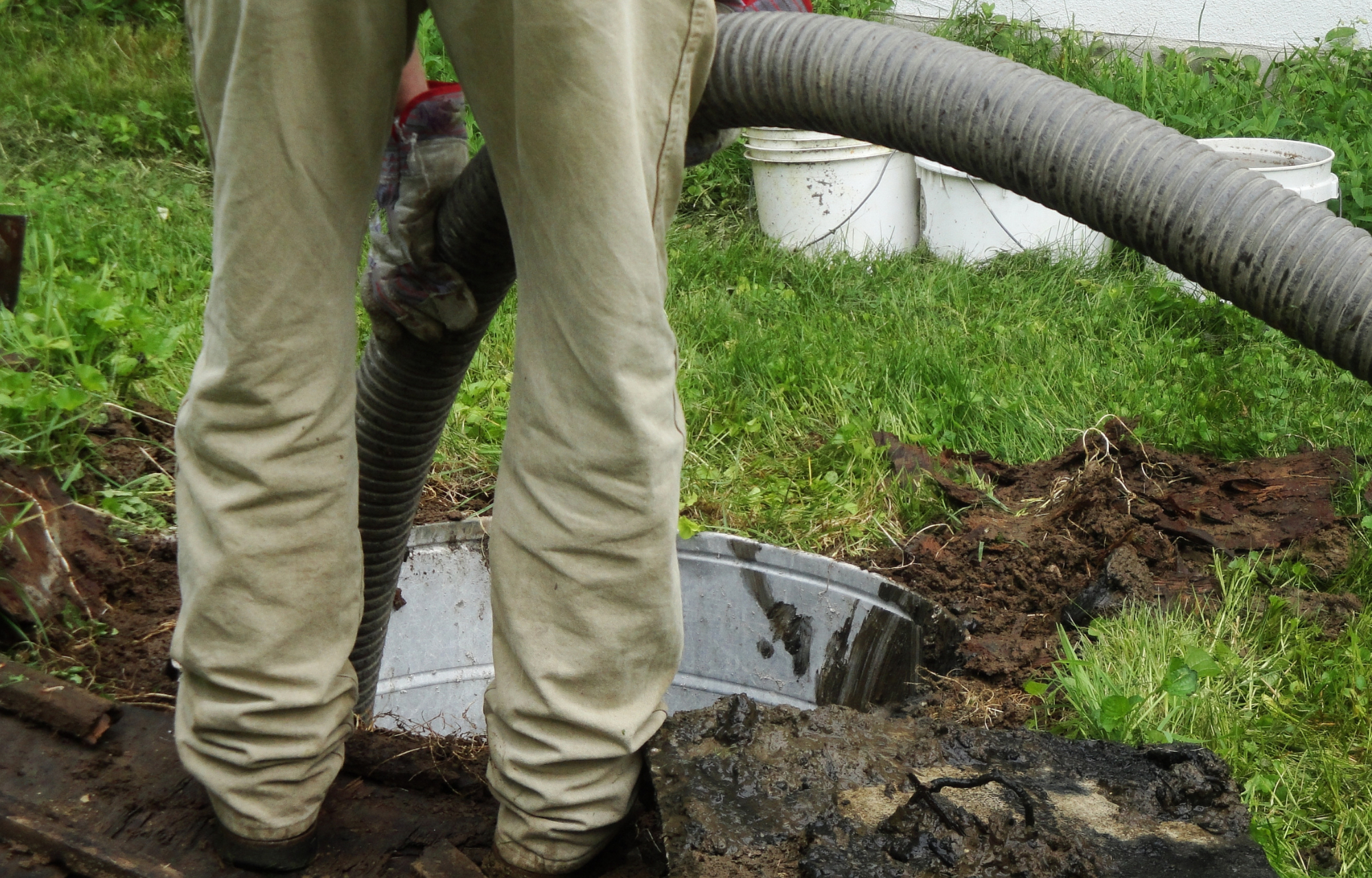
Septic Service Birmingham AL designs, installs, and services your new or existing septic system. A septic tank is the most straightforward, cost-effective way to manage wastewater in farm and rural areas, or anywhere that it isn’t possible to connect to municipal water and sewer services.
These underground systems work simply but effectively to manage the treatment of your home’s waste and wastewater. They separate solid waste from liquid and allow the liquid to be naturally reintroduced into the ground. There are a few different options when it comes to types of systems, materials, and capacity for your septic tank in Birmingham AL. The unique features of your property will also have an influence on the best type of system for you. More about all of this below.
The biggest factor in establishing the needed capacity of your septic system is the size of your home. Your septic tank needs to be large enough to handle the amount of water and waste being produced. In general, an average 3-bedroom home requires a 1,000-gallon tank. Contact us to arrange for a detailed quote for all your septic service in Birmingham AL.
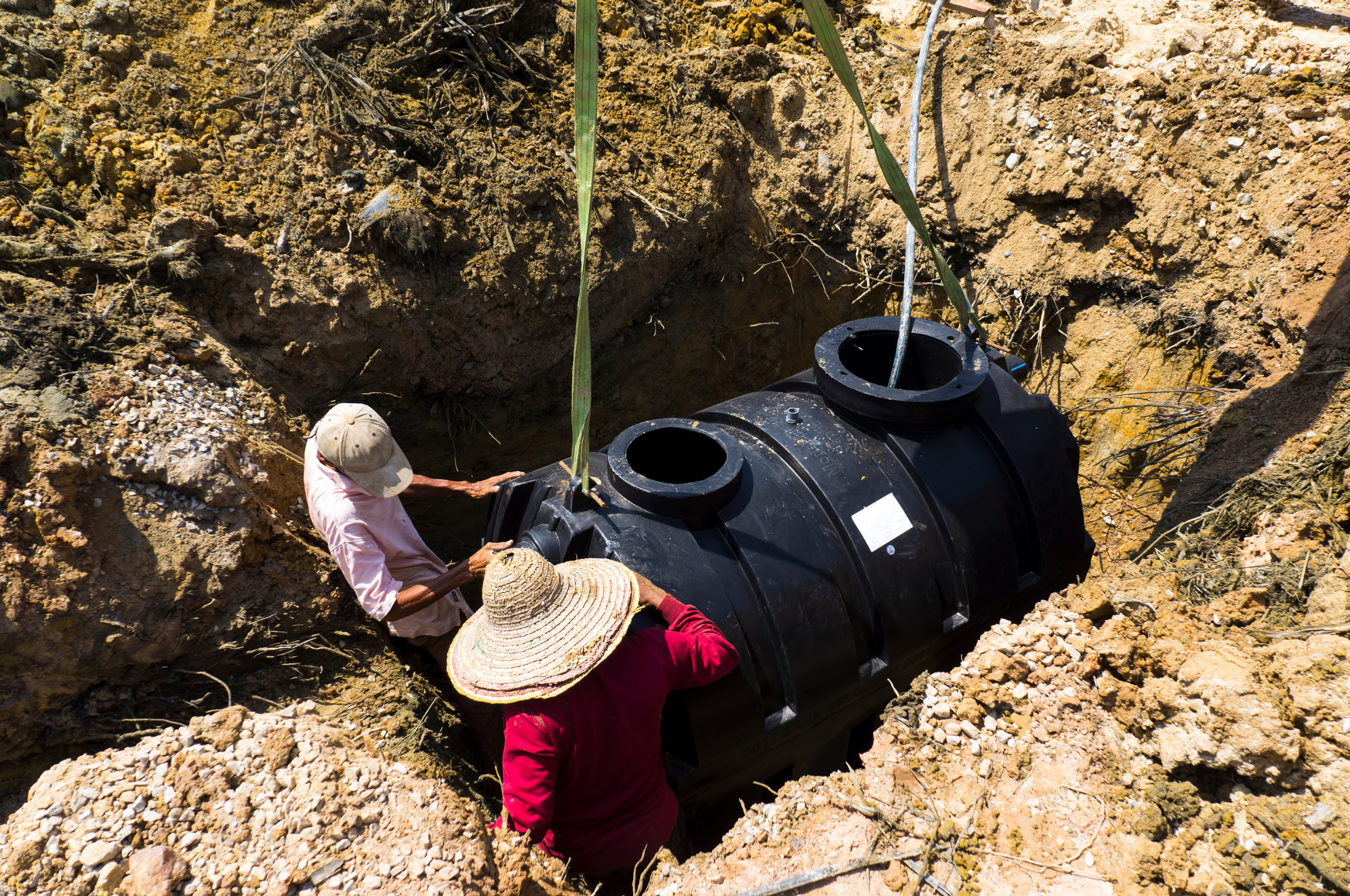
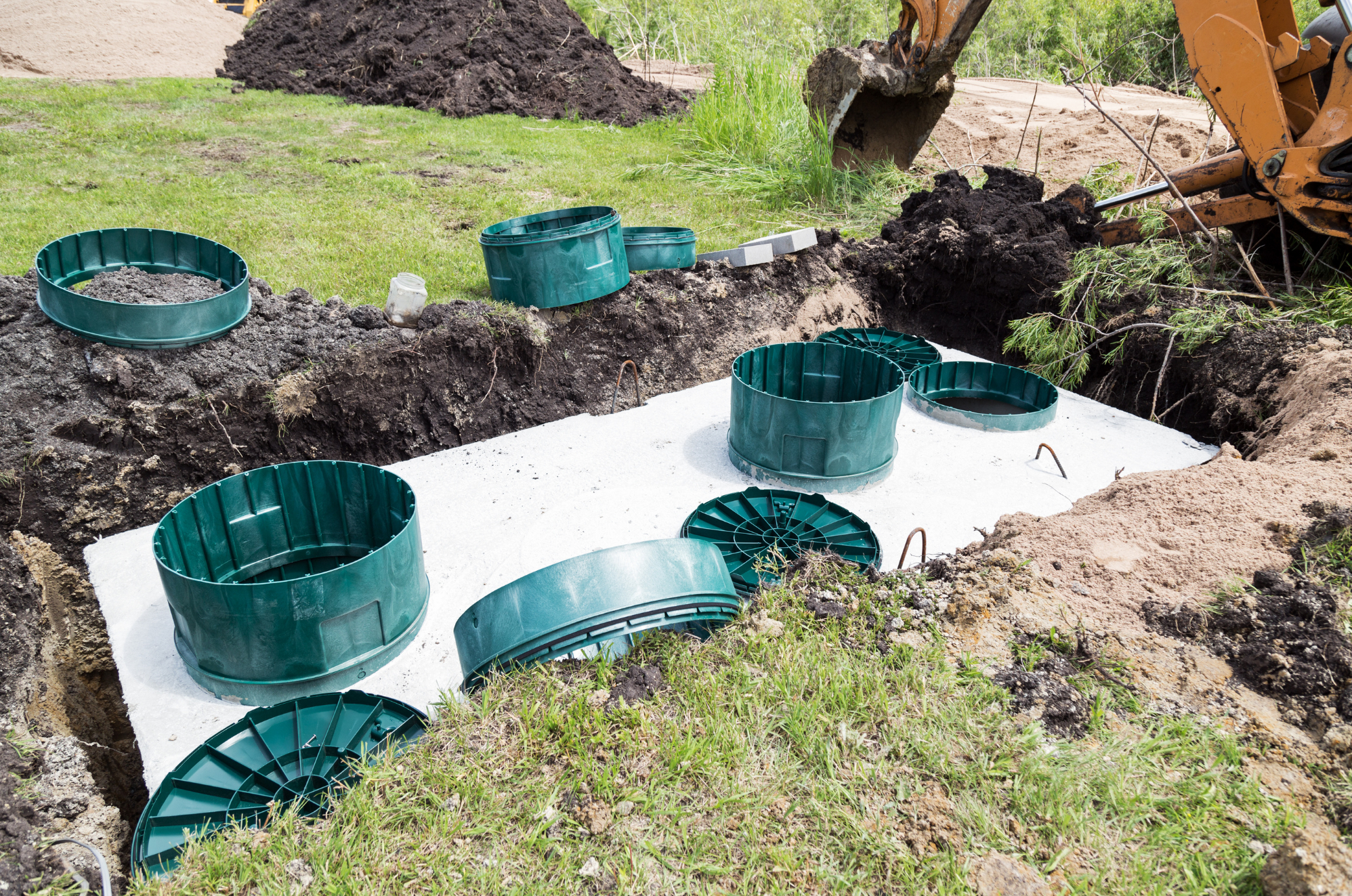
Most septic tank applications start at 750 gallons for a 1–2-bedroom home. Larger homes with up to a dozen occupants will need a tank of up to 3,000 gallons. We also service commercial applications such as hotels, trailer parks, schools, or large farms. These are not so straightforward to ballpark in terms of size, type, and location. Contact us to get a detailed estimate for your commercial property’s needs.

Septic tanks are available in a range of standard sizes and are made of either concrete, plastic, fiberglass, or steel. New installations will almost never use a steel tank these days. There are also two basic types of system: anaerobic and aerobic. We’ll discuss both the different types of system and materials later on!
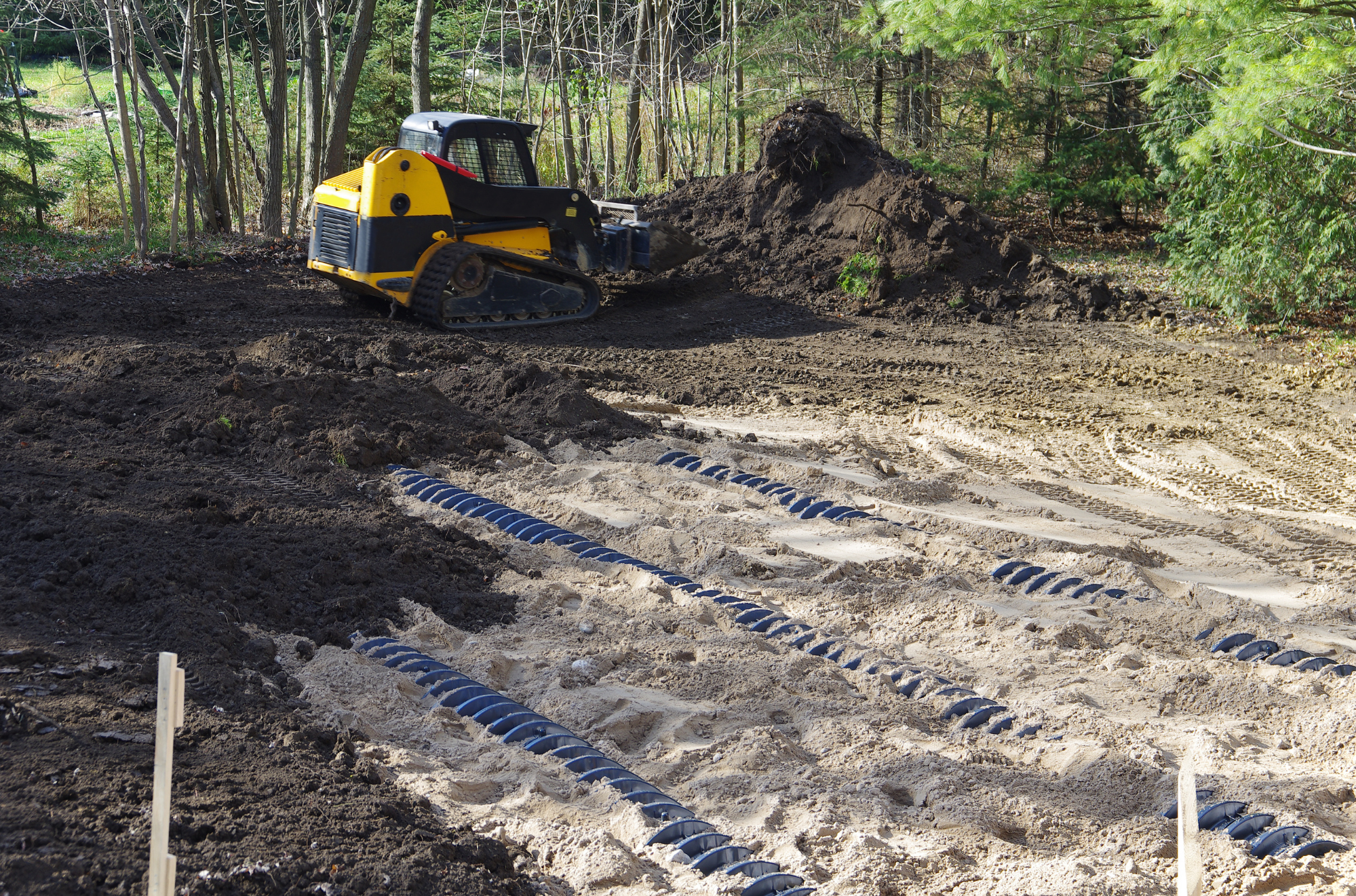
The leach field is a plot of ground that acts as a natural filter for your wastewater. After water has been treated and separated in the tank, it is fed to the leach field. Here it leaches through a series of cleansing layers of sand, gravel, and soil before it is reintroduced into the water table.
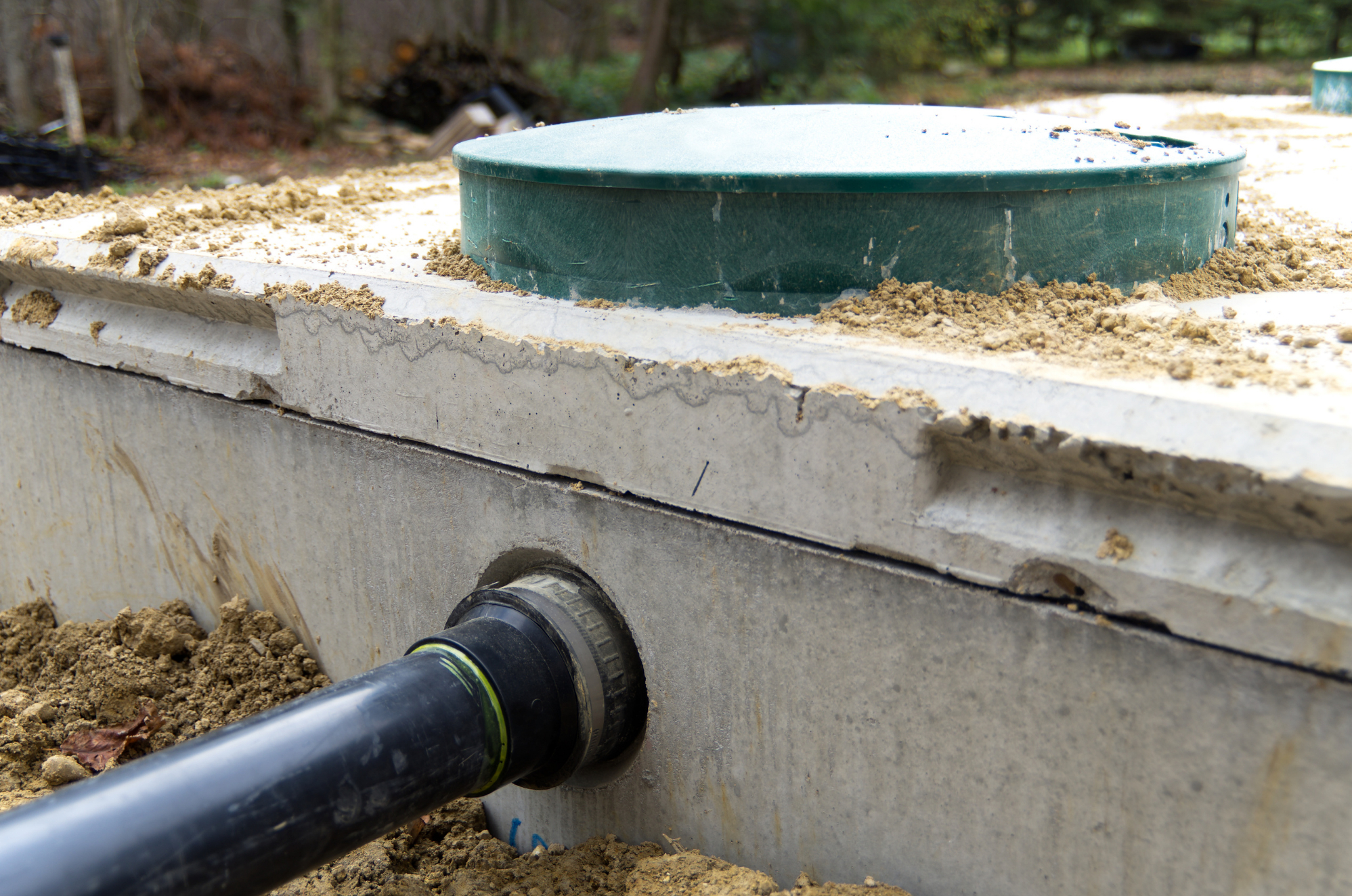
Pretty straightforward but very necessary! This consists of a drainpipe running to the tank, then a branched pipe running from the tank and out to the leach field.
If your septic system needs to work against gravity to move water from the tank into the leach field, you may need a dose tank or pump tank. This auxiliary tank pumps wastewater in small does up into mounded or raised leach fields and recycles the water.
This type of pump is used in aerobic systems and is the principal difference between an aerobic septic system and an anaerobic septic system. It pumps oxygen into the tank to accelerate the breakdown process.
Sometimes called a baffle. This is installed between the tank outlet and the pump chamber. Its job is to protect the pump and the drainage holes in the distribution pipes from getting clogged with solid waste.
We’ve already mentioned that septic tanks can be made from concrete, plastic, or fiberglass. In addition to the type of material, we also said that there are two kinds of system. These are aerobic and anaerobic. Let’s look more closely at those types of system and the differences between them now.
Anaerobic septic systems: This traditional design is the simplest, most cost-effective type of septic system. Anaerobic systems do not make use of additional oxygen to operate. Installing an anaerobic system is much cheaper than the aerobic version of the same size.
This type of system works by utilizing anaerobic bacteria to naturally break down the material in the tank before releasing water into the leach field for further processing.
Aerobic septic systems: The aerobic design uses an oxygen pump called an aerator to introduce aerobic, or oxygen-loving, bacteria into the septic tank. This process breaks down waste more efficiently than the anaerobic style of septic tank. Because of the additional components an aerobic system is more expensive to install. Call us for all your needs related to septic system repair contractors, including consultation services, design, preparation, and installation.
Call us for all your inquiries related to septic tank service in Birmingham AL!
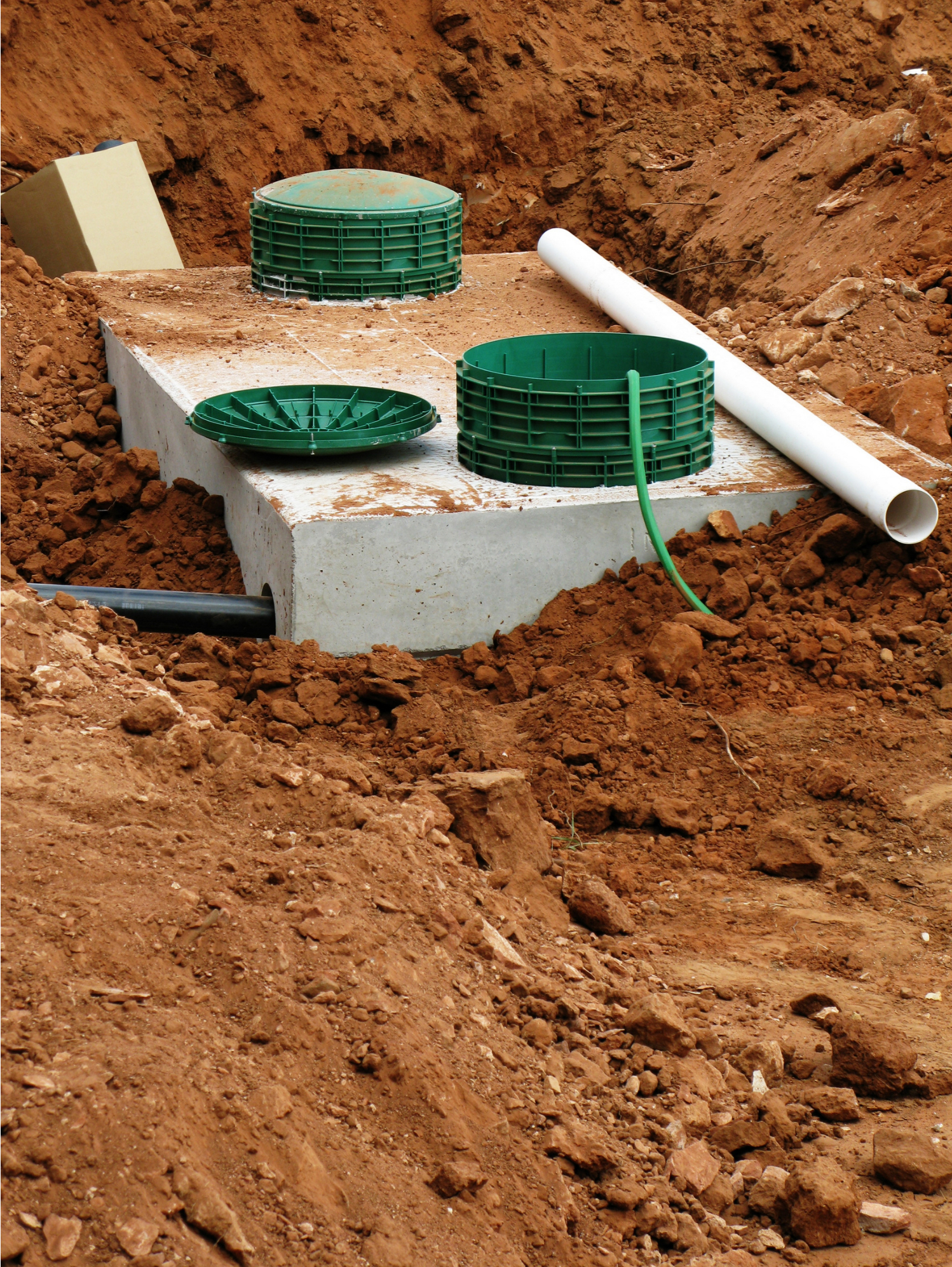
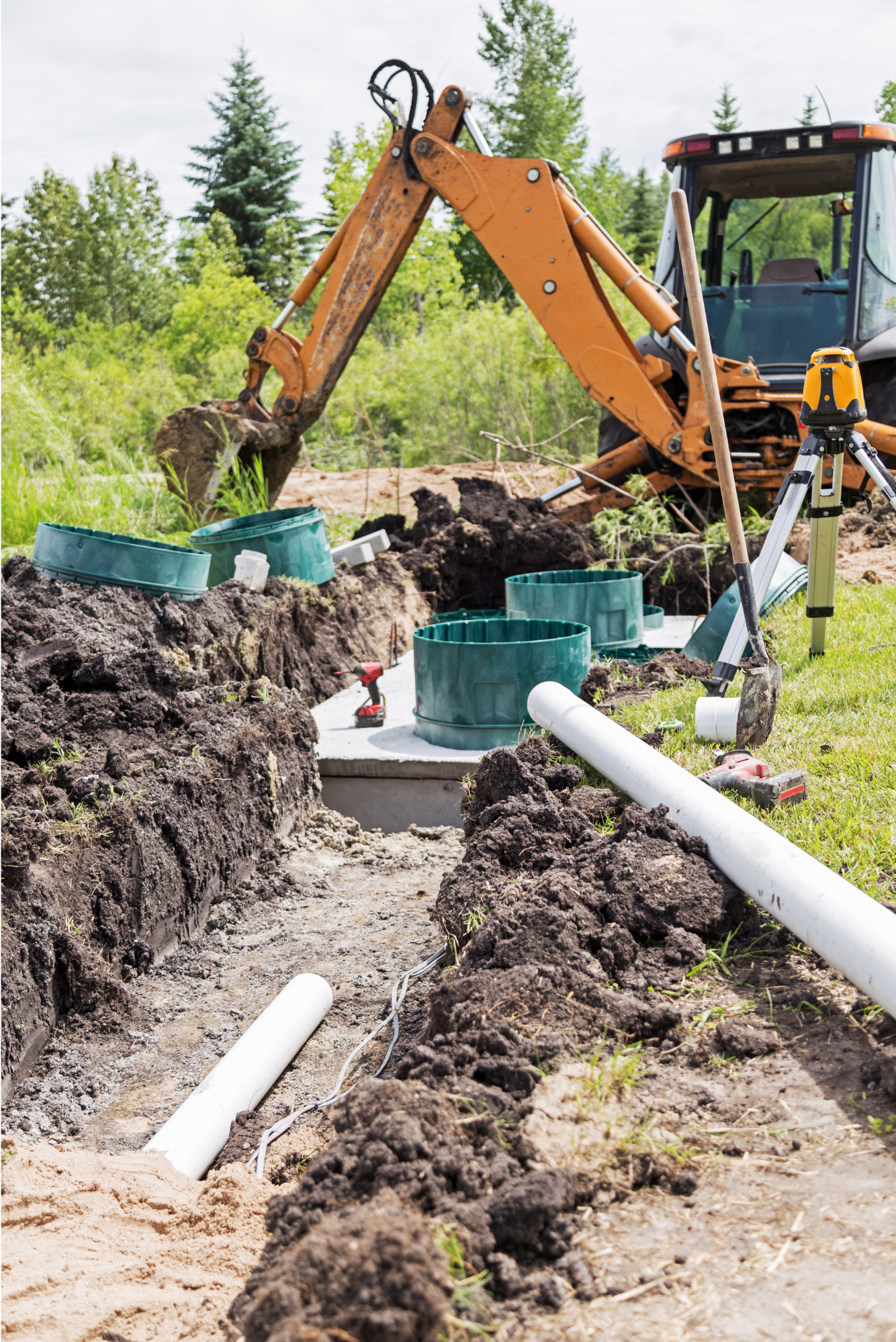
Depending on your property, you may need to consider a different type of installation, regardless which of these two septic tank types you are using. The three most common alternative installations are a mound septic system, sand filter septic system, and pressure distribution septic system. We’ll explain each of these systems below, and the type of situation where they may be appropriate.
Mound septic system: As the name suggests, this type of system is installed by building up, rather than digging down into the ground to establish the leach field. A mound system is often necessary if your property is on a high water table, or if it has shallow soil depth or shallow bedrock. A mounded appearance is created by installing a network of perforated drain tiles and a thin biofilm. These help to create a system that efficiently purifies wastewater before it is reintroduced to the water table.
Because of the extra machinery needed to pump wastewater uphill, as well as the materials and labor required to create the mound itself, this is usually the most expensive type of design.
Sand filter or recirculating sand filter septic system: A sand filter septic system may be either above or below ground. This type of system uses a pump to push material from the tank to a filter box filled with pipes full of sand. In this filtration system, wastewater filters through the sand and then back to the pump tank. From there the water is dispersed through the ground and back into the water table.
In most cases, wastewater is moved through the septic system and into the leach field by gravity. But there are times when this is impossible or not ideal. In situations where it’s impractical to use a gravity-powered system, a popular alternative is a pressure distribution septic system.
This type of system makes use of pumps to transfer wastewater into the drain field more quickly for processing before reaching the water table. Instead of flowing downslope, water gets pumped upslope through a series of drainage pipes and is distributed into the leach field. Regularly spaced holes in the drainage pipes ensure even distribution of wastewater.
Pressure distribution systems can be installed within 2 feet of the water table – a big benefit if your water table is high. This type of system may also be suitable for properties with less permeable subsoils. They also distribute water more evenly throughout the leach field than traditional gravity-powered systems.
The advantage is that water passes through the leach field at an appropriate rate. This results in a healthier leach field that avoids pooling wastewater, as well as ensuring water is fully treated before entering back into the water table.
These designs make up the majority of septic system applications. Contact us for a custom-designed quote for all your septic tank service needs in Birmingham AL.
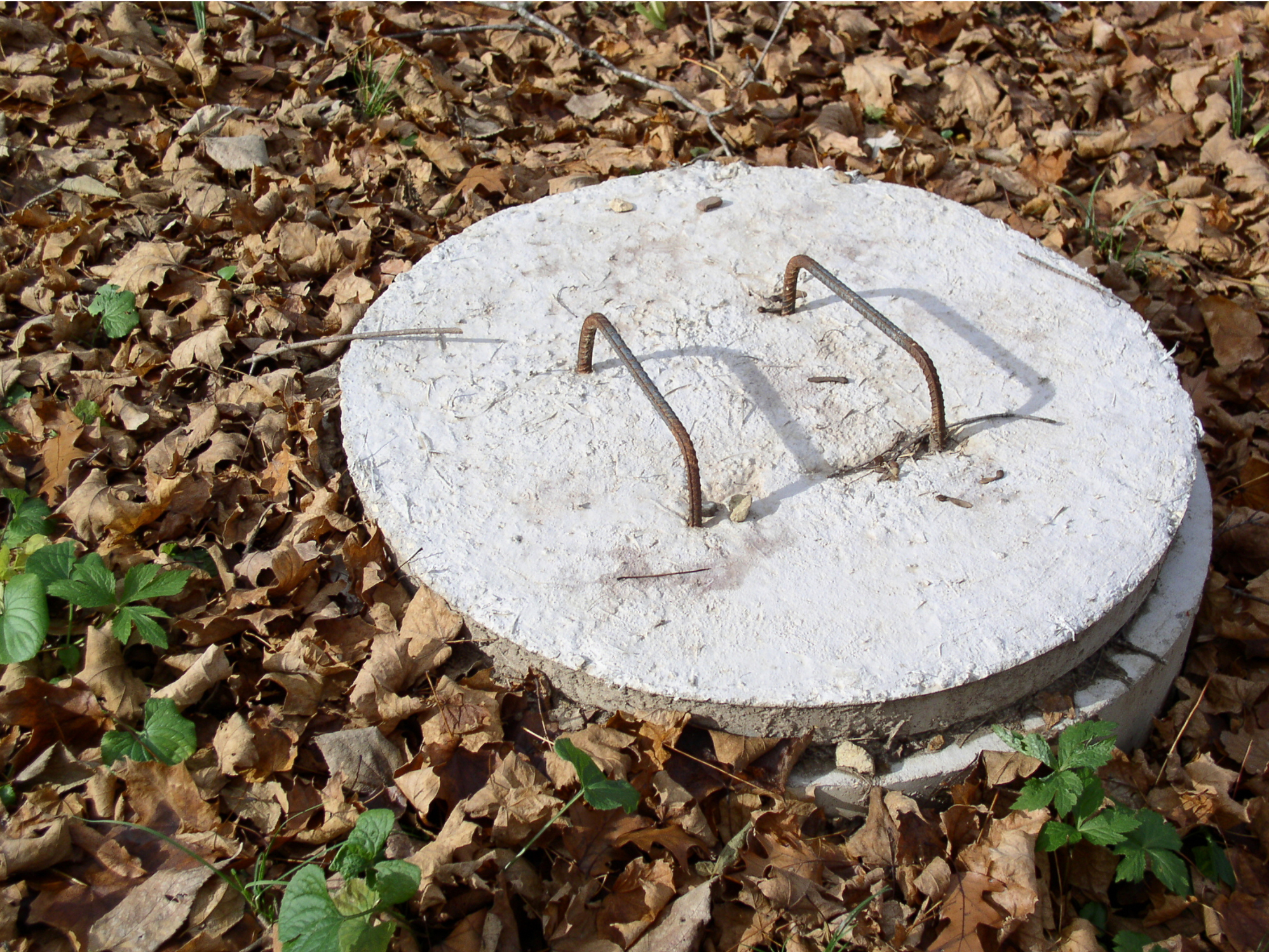
Your septic tank is a fairly simple piece of technology, but it’s critical that it work properly. A major factor in its correct operation is the material it’s made from. There are only a few materials approved for septic tank designs, and there are pros and cons to each. Adequately maintaining a septic tank can prolong the life of the system regardless of which material is chosen. The most common septic tanks are designed from concrete, fiberglass, or plastic. Less common these days are steel tanks. We’ll discuss why at the end of this section.
Concrete tanks are the most common and durable. If you are doing a new installation, consider a concrete tank reinforced with rebar. This classic combination of concrete and steel offers tremendous strength under pressure.
Even concrete deteriorates over time, and a crack in your tank can allow liquid waste to seep out and groundwater to get they can begin to crack and allow seepage of liquid waste out and groundwater into the tank, so it’s important to get your tank inspected regularly. A good practice is to have your system inspected once a year, so you don’t get caught in a pickle with your septic!
Because of the weight, larger equipment is required to install a concrete tank. That weight also means that a properly installed concrete tank will be more resistant to shifting when the ground shifts.
Polyethylene or plastic septic tanks are cheaper to buy and install than concrete because they are lighter and use less building material. Even though they’re plastic, these tanks are tough. They won’t crack, but if placed under extreme pressure they can be put at risk of breaking.
The lighter weight can make them easier to install, however if a plastic tank is installed improperly, it can become unsettled and rise to the surface or break under pressure from shifting ground.
If you are considering a plastic septic tank, be sure to install it in an area where no vehicles can drive over it and potentially damage the tank.
Fiberglass septic tanks are an increasingly popular alternative. They do not expand or contract like concrete does, and won’t deteriorate underground. While fiberglass tanks are heavier than plastic tanks, they are still at risk of shifting if water tables change or the ground shifts. As with plastic septic tanks, fiberglass tanks are lighter and therefore easier to install than concrete.
Because it is a nonporous material, a fiberglass tank is more algae-resistant than a material like concrete.
It may seem counterintuitive at first, but stainless steel is the least popular material for septic tanks, and stainless-steel tanks have the shortest lifespans. Rust and corrosion are a constant hazard to steel tanks buried underground and interfacing with corrosive materials.

Septic Service Birmingham AL designs, installs, and services your new or existing septic system.